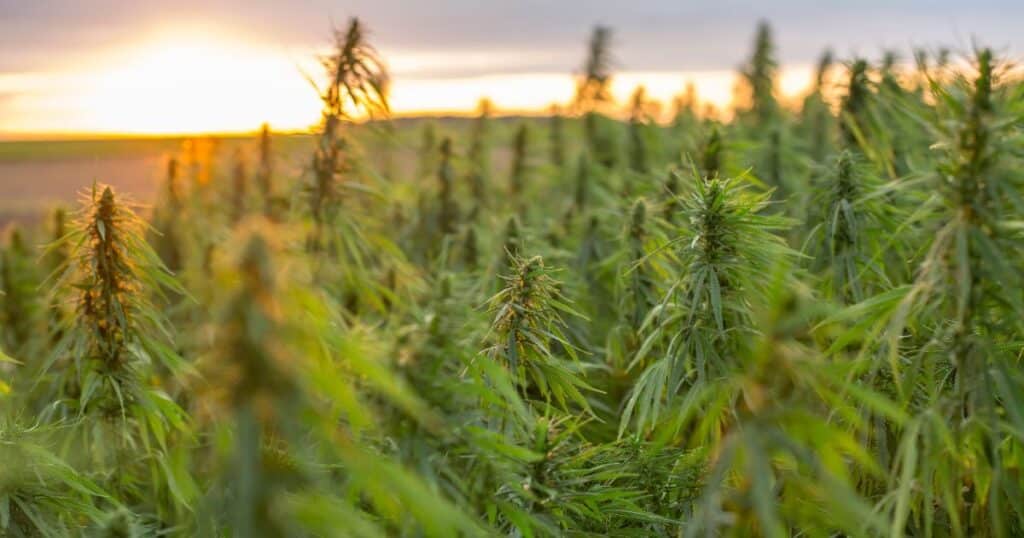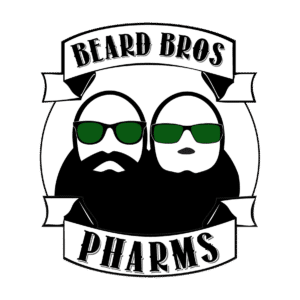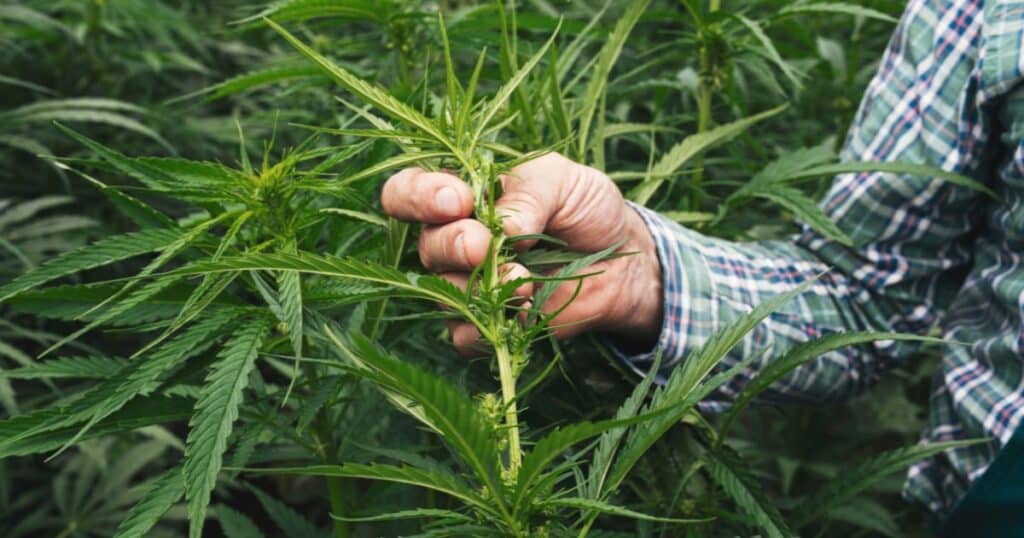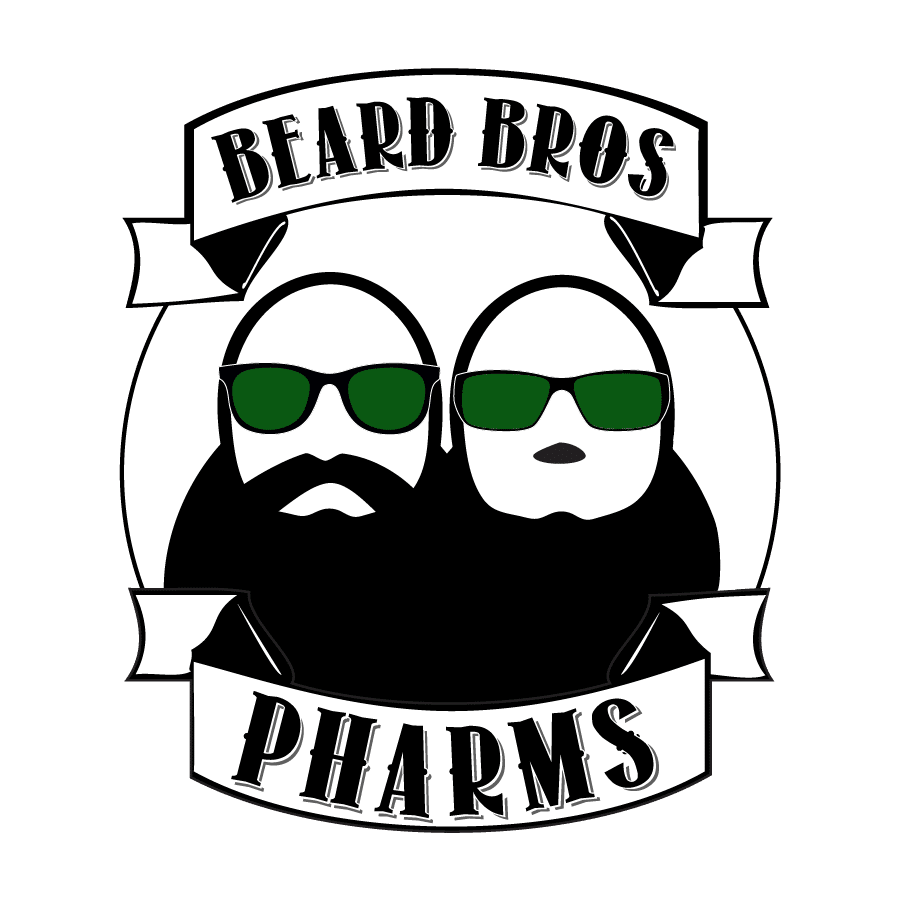In a study by the National Institute of Standards and Technology (NIST), results indicated that an overwhelming majority (93%) of smokable hemp products contain levels of THC that would classify them as “illegal” under federal law.
This data raises questions about the marketing and regulation of hemp items, particularly in light of the 2018 Farm Bill that defined hemp as having no more than 0.3% delta-9-tetrahydrocannabinol (Δ9-THC).

2018 Farm Bill
The demand for hemp has skyrocketed since the 2018 Farm Bill, which removed hemp from the list of controlled substances, effectively legalizing it in the United States.
However, despite the surge in production, the lack of rigorous testing and regulatory framework led to a market flooded with products that, according to this study, exceed the legally mandated THC threshold.
The implications are vast, affecting consumers who might accidentally face legal jeopardy, law enforcement, and product analysts who struggle to differentiate between legal hemp and illegal marijuana.
Study of Smokable Hemp Products
The study published in the Journal Forensic Chemistry methodology involved testing 53 smokable hemp products from various sources, using high-sensitivity liquid chromatography with photodiode array detection (LC-PDA) complemented by a methanol extraction procedure.
This approach aimed to achieve reliable quantitative measurements of key cannabinoids, including Δ8-THC, Δ9-THC, and THCA, while also considering related factors such as sample inhomogeneity and batch variability.
More than 90% of the products tested were found to contain levels of total Δ9-THC above the federal legal limit despite being marketed as hemp with associated online documentation to corroborate the classification.
“All samples were sold as smokable hemp with Δ9-THC levels less than or equal to the federal limit of 0.3 %; however, the LC-PDA measurements at NIST indicated that ≈ 93 % of the samples were above the 0.3 % federal limit.” the study outlines.
This significant discrepancy indicates a systemic failure within the hemp industry, either due to a lack of testing stringency, batch-to-batch variation, or potentially falsified product information.
Discrepancies Between Labels and Test Results
An alarming aspect of the study was the extensive differences between the product labels and the actual test results from NIST. In nearly half of the cases, information from the online documentation directly contradicted the lab results.
“Nearly half of the online documents provided by the manufacturers differed from corresponding product labels, and direct comparisons to NIST values were limited to 22 samples”
Such inconsistencies pose a considerable challenge for consumers who rely on accurate product information and highlight a fundamental problem in the hemp industry.
The findings have severe implications for consumer protection. While manufacturers and distributors may not intentionally sell products in violation of the law, the lack of efficient testing methods and regulatory oversight means that unwitting customers are at risk of purchasing products that could lead to potential issues. This underscores the urgency for standardized, foolproof testing protocols and clear labeling standards that consumers can trust.
Call for Improved Measurement and Industry Standards
The findings have severe implications for consumer protection. While manufacturers and distributors may not intentionally sell products in violation of the law, the lack of efficient testing methods and regulatory oversight means that unwitting customers are at risk of purchasing products that could lead to potential issues.
The researchers emphasize the critical need for accurate analytical measurements within the hemp industry. To ensure consumer safety and regulatory compliance, precise quantification of cannabinoid content is imperative.
The study also highlights concerns about storage conditions. It’s essential to establish appropriate long-term storage conditions to prevent cannabinoids from degrading or unintentional THC level increases due to decarboxylation and other chemical reactions over time.
Updated product information is equally crucial. With nearly half of the product documentation contradicting lab results, there’s a dire need for transparency and accuracy in product labeling and online descriptions.
Lastly, the results underscore the urgency for reference materials in the cannabis industry. Such materials would serve as benchmarks for measurement accuracy, calibrating laboratory instruments to ensure consistency across different testing facilities. The absence of standard reference materials contributes to the variability in THC measurements and the ensuing confusion around product legality.
Striking a Regulatory Balance between Hemp and Marijuana
Despite both hemp and marijuana originating from the Cannabis sativa plant, U.S. law treats them very differently, leading to confusion. According to recent studies like the one above, hemp faces less regulation compared to the strict rules governing marijuana.
When the 2018 Farm Bill reclassified hemp, removing it from the Schedule I category due to its low THC content, it marked a significant change, opening doors for its use in industry and therapy. This was expected to help the hemp industry grow separately from the marijuana debate.

However, the actual oversight appears to be less stringent than expected, with many hemp products on the market having higher THC levels than the law allows, as evidenced by the study above, indicating a gap in regulation.
Marijuana, on the other hand, remains tightly controlled, listed in the Schedule I category as a substance with “no currently accepted medical use and a high potential for abuse.” This limits its research and use despite an increasing recognition of its medicinal benefits and more states legalizing its medicinal and recreational use.
This difference in regulation creates confusion and limits the potential growth and development of both sectors. The study points out that the light regulation of hemp could pose risks to consumer safety and legality for both consumers and producers. Meanwhile, strict marijuana regulations limit research, economic opportunities, and medical progress. Finding a more balanced, evidence-based approach to regulating Cannabis sativa could help in promoting innovation, public health, and clearer legal guidelines.
Most Popular News Posts
- Glassblowing is Not a Crime But That Wasn’t Always the Case – A Look Back at Operation Pipe Dreams
- A Brief 50,000 Year History of Our Relationship with Psilocybin Mushrooms
- How to Middleman a Goddamn Motherf*ckin’ Hemp Biomass Deal
- Study Uncovers Traces of Xanax in 72% of Blood Samples Yet We Still Have to Fight For Cannabis Rights





